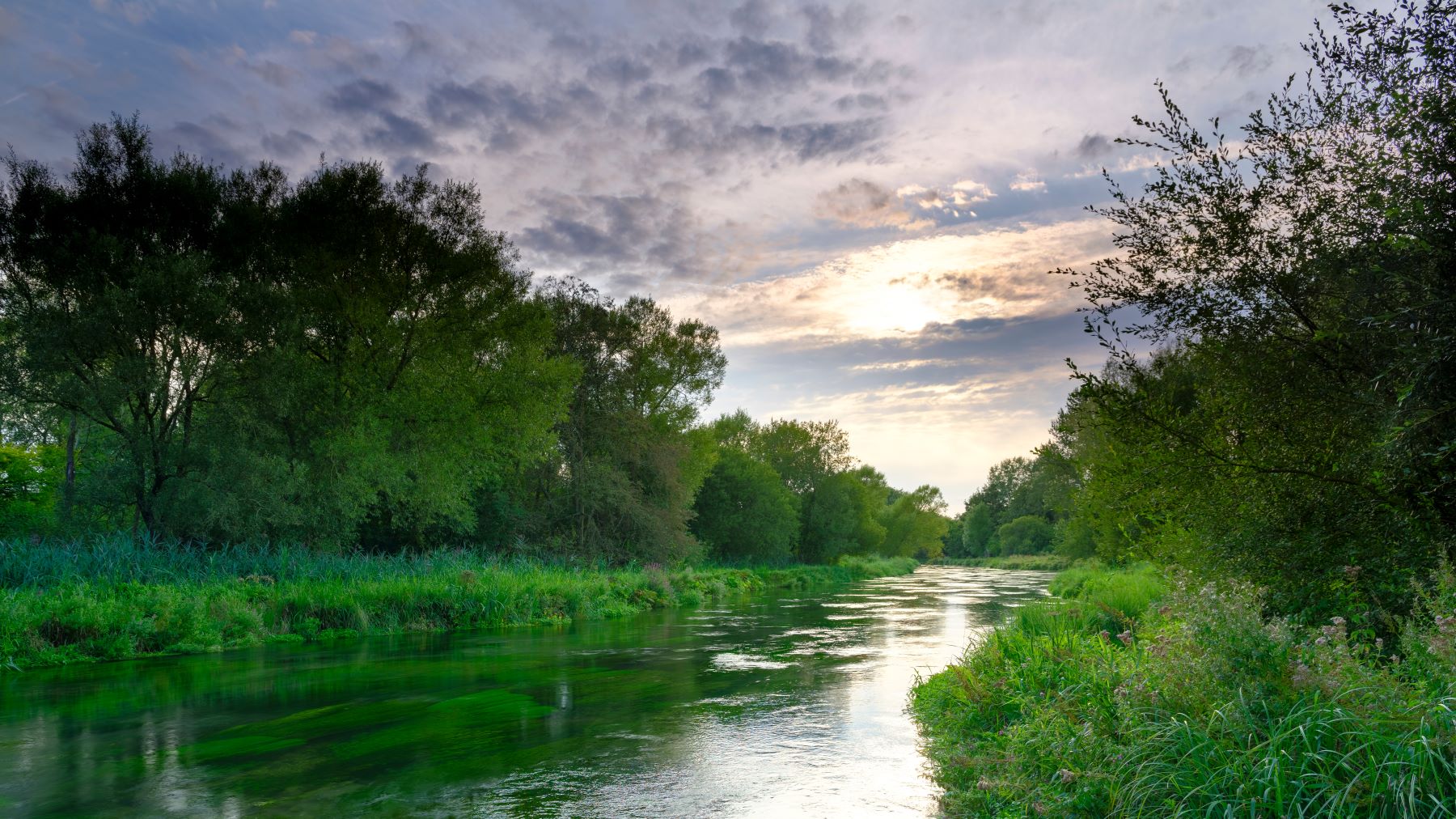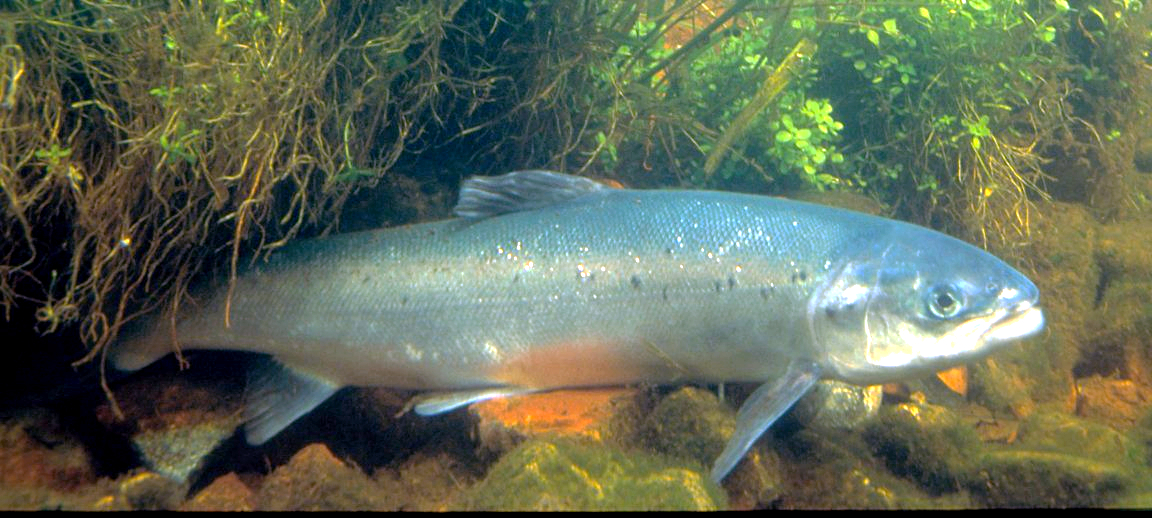
Hampshire is rightly proud of its globally-important chalk streams but while they look idyllic, appearances can be deceptive. Dr Tom Ball, Reader in Geography and head of the Department of Social Sciences at the University of Winchester explains why a drop of science is needed to restore these vital habitats to their former glory…
Joni Mitchell wrote Big Yellow Taxi in 1970 as a clarion call to value what we have, while we still have it. The global environmental movement was really starting to gain its voice by then with the public taking note of the environmental effects of water pollution.
It had taken an expert, US Oceanographer Rachel Carson, to convey the science with devastating clarity. Her 1962 book Silent Spring exposed the danger of DDT and its effect on birds. The book needed writing; without it the public may not have noticed. At that stage the danger was hidden to all but expert eyes.
Many years later, in 2015 on BBC Radio Costing the Earth, Tom Heap visited the Itchen and Test catchments and interviewed conservationists and water managers. Tom noted at the outset that the Itchen looked ‘to me, at least …. pretty perfect’. He found stunning rivers with Wind in the Willows-style idylls but exposed a hidden story of long-term decline due to control, mismanagement and phosphate pollution. Added to this were the future perils of abstraction pressures and climate change. It’s an excellent programme that I still use in teaching.
In one segment the producers do a very good job - for radio - of conveying a kick sampling technique for gravel-dwelling invertebrates, the vital underpinning to any freshwater food web. When Tom discusses the contents of the sample with Paul Knight, then Chief Executive of Salmon and Trout Conservation UK, Paul points out how poor the sample is, giving little for fish to feed on. It’s the moment that it hits home to Tom that all is not what it seems in the gin clear waters of the Itchen.
Dr Tom Ball measuring channel change in the Eddleston Water, Scotland
When I head out to the Itchen with students, it’s always interesting to poll them informally on how ‘natural’ they view the river in Winchester as it tumbles soothingly over old sluices and weirs, round through the rare wet woodland in the old water meadow of the Winnall Moors.
None of it is really natural of course. A weir is clearly not natural and neither - less obviously - is a water meadow. The river has also been straightened and diverted over the years. It is our continued management of these semi-natural waters that is crucial to maintaining the value of rivers and floodplains. Like Tom, getting close to the fabric of the river reveals to the students the damage that needs to be repaired if fish are to return in their former numbers.
The Itchen is now about as far east as any salmon gets in England on their return from the Atlantic to spawn. In 2022, according to DEFRA, there were just 80 rod catches and releases of salmon in the Itchen and 77 in the Test.
Salmon used to be found in the Thames and its tributaries, but regulation of flow, pollution, and assorted other threats mean they are long gone. This alone should give us pause for thought. Salmon remain the reason behind the conservation designation of many of England and Wales’ rivers, so there is a legal mandate to ‘conserve’ but in the context of climate change even this low number is under pressure.
Could we get more salmon to return? Should we try? Is there a public desire to spend scarce resources on this? Part of the challenge is access for these fish, but the rest is food and spawning sites.

Salmon, whose numbers in the Itchen and Test are down
One problem that is hard to surmount is their survival at sea, over which we have limited control. Excellent spawning rivers such as some in Scotland are still showing declines, due to ocean warming and overfishing. In fact, these rivers are a gauge as to the limits of what we can do with so much oceanic change.
Yet there are still grounds for thinking that a little effort can go a long way. What is needed is a kick start to natural environments. We should be shallowing and speeding up our rivers to set up a variety of habitats that the salmon seek out in the upper reaches, including shaded area to provide the cool waters that these hard-working fish rely on as they swim back upstream to their juvenile home.
It's happening. The Test and Itchen Restoration strategy was set up just over 10 years ago by the Environment Agency after detailed surveys of potential in both rivers.
Working with landowners and other stakeholders, strategy author Heb Leman brought forward a series of simple, quick measures such as removing weirs, re-profiling gravel and using simple debris placement on the banks, enhancing bank growth of vegetation to provide shading.
Getting these measures to work relies on a certain amount of change to traditional river keeping practices, but angling societies do tend to buy into this when they see the results. When he took me out to the field, I saw how Heb’s efforts at engaging and talking to river keepers were working. The effects are rapid, within a couple of seasons the river is flowing fast over clean gravels that you can actually see, the water is so much shallower. The changes benefit other animals too such as water voles and otters. The river looks alive again.
.jpg)
Returning rivers to a more natural state benefits mammals, such as the water vole, as well as fish
I would argue that we need to keep this process going and keep the public eye on the problem, as governments respond to public pressure. I’m looking forward to keeping working with restoration projects and organisations such as the Eddleston water project (which has brought salmon back to an upper tributary of the Tweed in the Scottish Borders), and with collaborators from the University of Ostrava, Czech Republic, and Oslo in Norway.
Recent high-profile damage from water companies may attract public attention, just as Carson did with DDT in the 1960s. But just as then, let’s not wait until it’s too late!